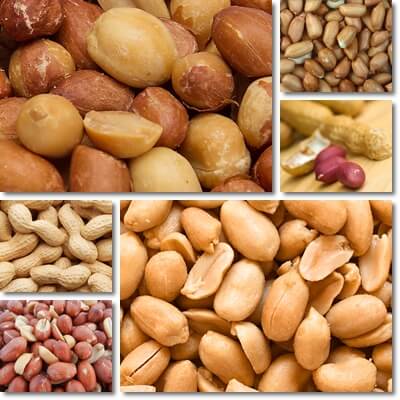The glycemic index, GI for short, is a scale that measures how fast the carbohydrates in a food raise blood sugar levels. By essentially predicting the glycemic effects of common foods, the glycemic index aims to help with better blood sugar control, a key aspect of diabetes management. The GI scale goes from 0 to 100 (some say even higher), with the highest value being the highest glycemic effect, typically assigned to glucose. Glucose is a simple form of sugar and also the main type of sugar circulating in the blood, obtained from carbohydrates in food.
What is the glycemic index of peanuts?
On the glycemic index scale, between 0-55 is a low GI, between 56-69 is a moderate GI, between 70-100 is a high GI. The glycemic index of peanuts is only 14, a low score, one of the lowest of all nuts and seeds actually. Given their nutritional profile, some say peanuts glycemic index can go as low as 7 or as high as 20, 20+. A varying GI score is acceptable for most foods actually, since not even the same kind of foods are nutritionally identical.

In the case of peanuts, there are several different varieties (Spanish, Valencia, Virginia) and some have a slightly higher carbohydrate content than others which would explain the different glycemic responses they trigger. However, because all varieties are high in fat, protein and fiber and relatively low in digestible carbohydrates, peanuts are generally fairly low on the glycemic index scale, with an average GI score of 14. What this means for diabetics and anyone needing or looking to control their blood sugar is that peanuts have minimal glycemic effects.
How many carbs and how much sugar and fiber in peanuts?
100 g of peanuts has 16.13 g of carbohydrates of which only 4.72 g are sugars, another 2.91 g digestible carbohydrates and 8.5 g indigestible dietary fiber. A one ounce serving (1 oz or 28.35 g) has 4.57 g of carbs of which 1.34 g sugar, another 0.83 g digestible carbohydrates and 2.4 g dietary fiber. To get the most fiber out of peanuts, you would also have to eat the reddish-brown, papery seed coat surrounding the seeds.
Because, yes, the edible part we typically refer to as ‘peanut’ is a botanical seed; peanuts are nuts only from a culinary standpoint while peanuts in their cream-colored shells are pods, botanically speaking (like pea pods or bean pods).
Of all the different types of carbohydrates, only digestible ones, including simpler ones like sugar contribute to blood sugar levels. Dietary fiber is indigestible and does not contribute to blood sugar levels. Instead, dietary fiber slows down stomach emptying and the rate of sugar absorption into the bloodstream, helping achieve better control. Given how few carbs and how much fiber they contain, it’s no wonder peanuts have such a low glycemic index score and benefit diabetes to such an extent.

How much fat and protein in peanuts?
100 g of peanuts typically has over 49 g of fat and over 25 g of protein. A one ounce serving (1 oz or 28.35 g) provides 13.5-14 g of fat and 7-7.5 g of protein. Why know how much fat and how much protein in peanuts? Well, fat and protein have a longer digestion time than carbohydrates. Foods that are significant sources of fat and protein delay digestion and slow down the rate of sugar absorption into the bloodstream, helping achieve better blood sugar control in diabetics and non-diabetics alike.
What is the glycemic load of peanuts?
Peanuts are not only low-glycemic index, but also low-glycemic load. The glycemic load, GL for short, is a scale that measures how fast the carbohydrates in a serving of a food raise blood sugar levels. On the GL scale, between 0-10 is a low GL, between 11-19 is a moderate GL and over 20 is a high GL. The glycemic load of peanuts is only 1, an extremely low score (determined for an average GI of 14, 1-ounce and 2-ounce servings).
How many peanuts in a serving for diabetes?
Most diabetics can have one or two 1-ounce servings of peanuts as part of their regular diet. However, eating them in too high amounts too often can encourage weight gain which is to be avoided with diabetes. Peanuts have almost 570 kcal and close to 50 g of fat per 100 g. One 1-ounce serving provides 160 kcal and 13.5-14 g of fat. This is why it’s important to limit intake to small servings, no more than one serving a day, preferably not every single day. Ideally, choose raw peanuts and avoid oil-roasted, salted or sweetened options.
Exact serving size is best determined according to the diabetic person’s individual nutritional requirements, current state of health, including current weight and level of physical activity. Nuts and seeds in general are high-calorie and high-fat and can encourage weight gain over time which is a source of complications in diabetes. In addition to a reasonable intake, it’s advisable to maintain an active lifestyle in order to avoid weight gain.
Read more about the benefits of peanuts for diabetes, their effects on blood sugar and potential side effects in the article can you eat peanuts with diabetes?
Conclusion
Peanuts are low-glycemic, both low GI and low GL. They are actually one of the 10 lowest glycemic nuts and seeds you can eat with diabetes. What makes them good for diabetes is their particular nutritional profile which drives benefits specifically for the metabolic condition, notably minimal glycemic effects, better blood sugar and insulin control as well as minor benefits for blood pressure, cholesterol and possibly also diabetes-associated nerve damage. Of course, if you allergic, then it’s imperative that you avoid them in all forms and preparations.
